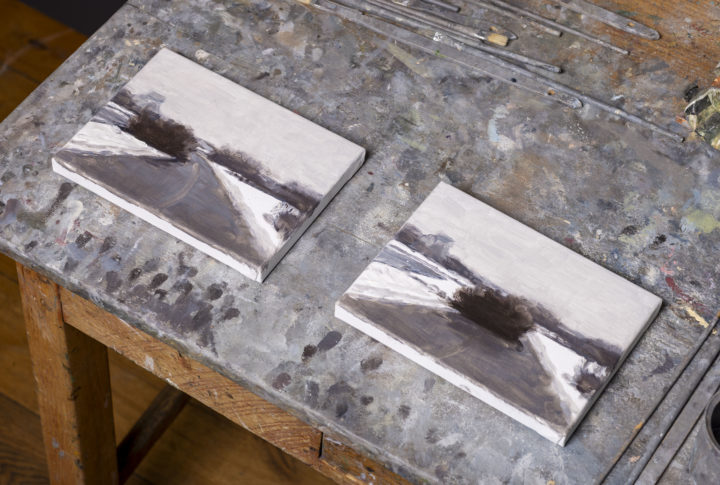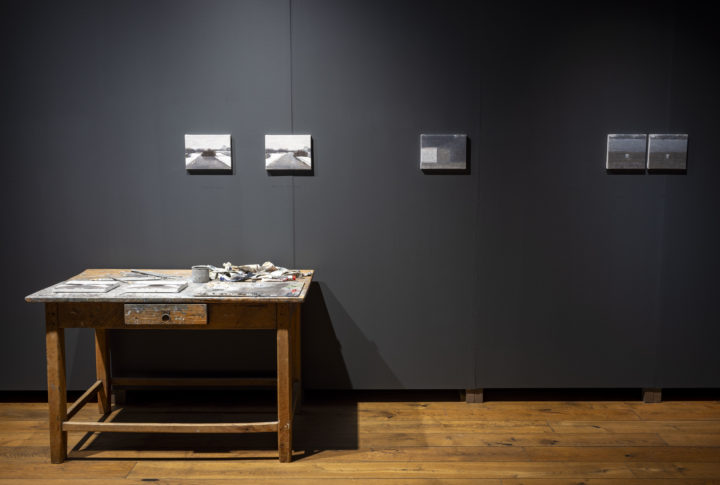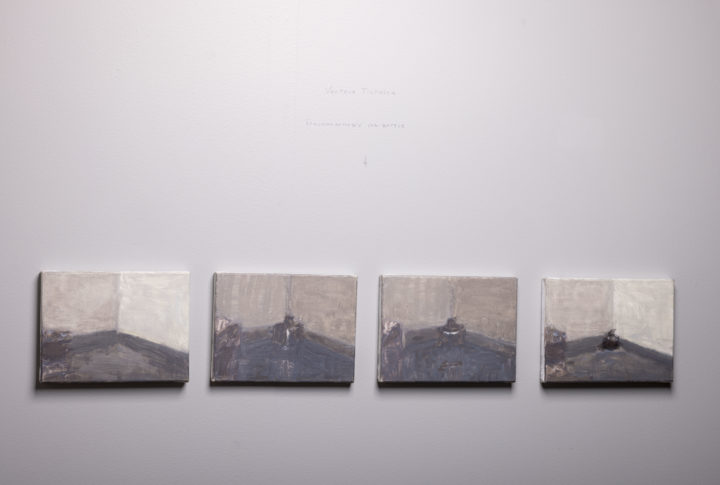LET’S DIE TOGETHER

Romāns Korovins
Romāns Korovins makes art with a basic toolkit. Some oils and a paintbrush. The point and the line. Ultimately, the brushstroke. His paintings are fairly simple: a realistic or abstract element is located in the middle of the canvas, while the remaining composition is stripped down to bare essentials. A diptych. Two paintings as the beginning and the end of an event. But what exactly has occurred between the two? The message of the painting isn’t in the plot – this isn’t literature, there is no narrative. “If I wanted to tell things literally, I would write them down. Instead, I paint,” the author states. That said, words, too, have a role to play in Korovins’ art. Although his paintings tend to have straightforward, ordinary titles, the unremarkable and simple phrasing adds more depth and ties the whole message together. The exhibit is narrative in its entirety. To fully access its intended contents, one should surrender to the artist’s rhythm… take all the necessary pauses and keep tracing light and line – the magic filaments that come together into a rich and vibrant tapestry knit by the artist’s sensitive and skilful hand.
“Let’s Die Together” is emblematic of the author’s method – Korovins delves into his hallmark themes of life, relationships, and time. His focus is on couples and familial ties. His subjects are two individuals at the conclusion of a lifetime spent together. Two people who have shared some genuinely special, memorable occasions as well as countless little tasks and ordinary routines in the prosaic day-to-day. Their common past has episodes of work and hope, the heights of joy and depths of disappointment. Ostensibly, these are the same experiences faithfully encountered hand in hand. But are they really all effectively the same? When all is said and done, one and the same event can be experienced in very different ways and trigger vastly different feelings and emotions. And even dying together – the final act whereafter no one has the dubious advantage to revise the shared past – can, in the end, turn out beyond compare. Yes, there will be some overlapping and resemblance, but never all the way through.
Iliana Veinberga, curator
Romāns Korovins, born in 1973, has been an established figure on the Latvian art scene since the 1990s. His early exhibitions were in a league of their own, unlike anything ever seen or done this side of the border. Photographs sloppily pasted on walls, hand-held videos and a plastic watering can tied to a radiator with a string… as if to prevent it from making it off… His irresistible joie-de-vivre and roguish flamboyance with an almost magical touch revealed themselves in brief and unexpected flashes lighting up the dull reality. His nonchalant irreverence to the so-called classical mediums, spiced with irresistible humour, has actually always been a clever front to hide a keenly sensitive soul with a deep respect for the purpose of art and the artist’s mission and an acute perception of the time and social context in which art is made.
Korovins has an extensive creative record of fifteen solo exhibitions and multiple group shows in Latvia, Lithuania, Denmark, Finland, the Netherlands, Russia, the US, Serbia, Greece, Germany and beyond. In 2015, he was featured in “Ornamentalism” – a satellite exhibition of Latvian contemporary art curated by Viktor Misiano for the 56th Venice Biennale. Three years later, Mark Gisbourne included Korovins in the 2018 Rohkunstbau exhibition in Germany. More recently, he appeared in the photo festivals in Rotterdam and Copenhagen (2020).
The artist would like to thank Jānis Deinats, Aleksandrs Vaicahovskis, Jānis Joņevs, Vlads Saveļjevs, Antons Ugrjumovs, Māksla XO Gallery and Ilze Žeivate, and Maxim Boxer Gallery.
The exhibition has been supported by the State Culture Capital Foundation.
Exhibition period: 1 March 2024 – 19 May 2024










